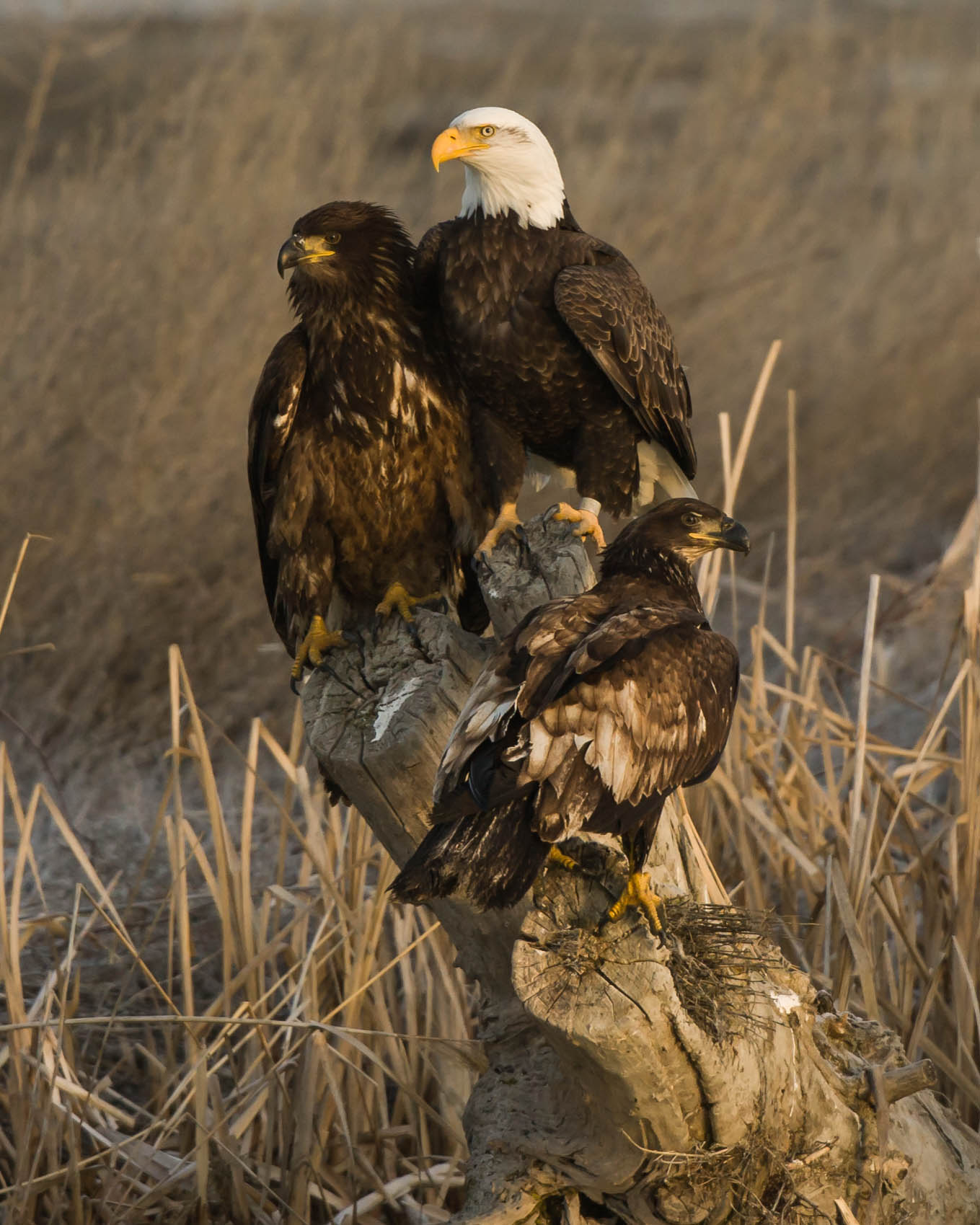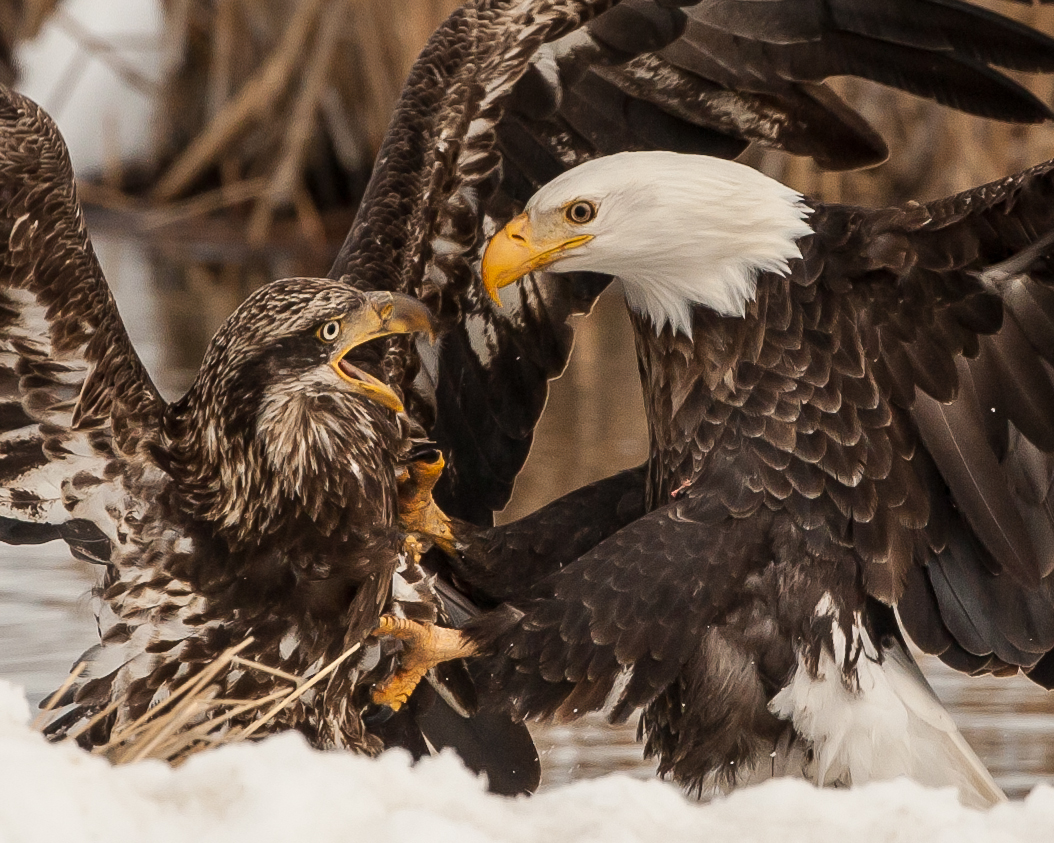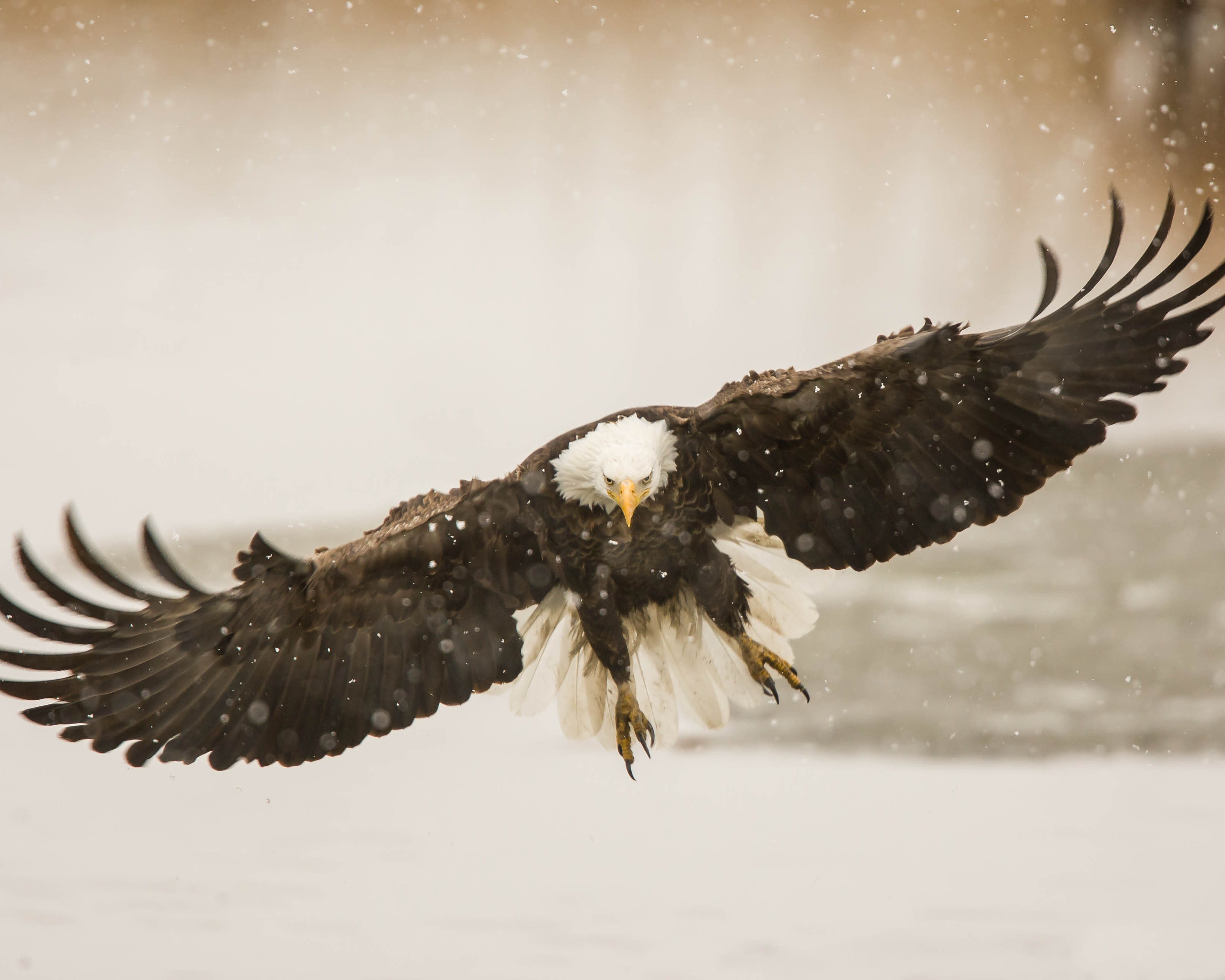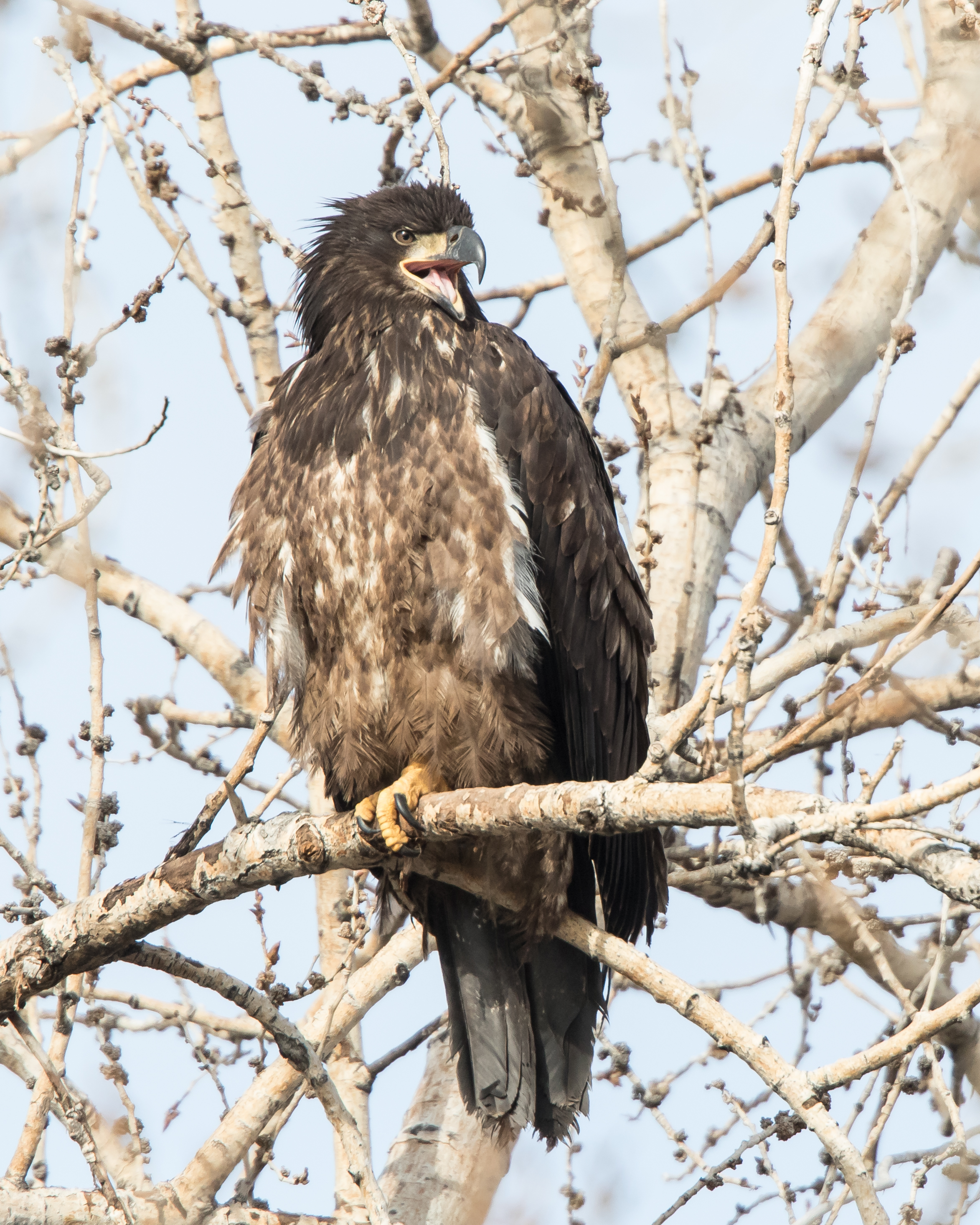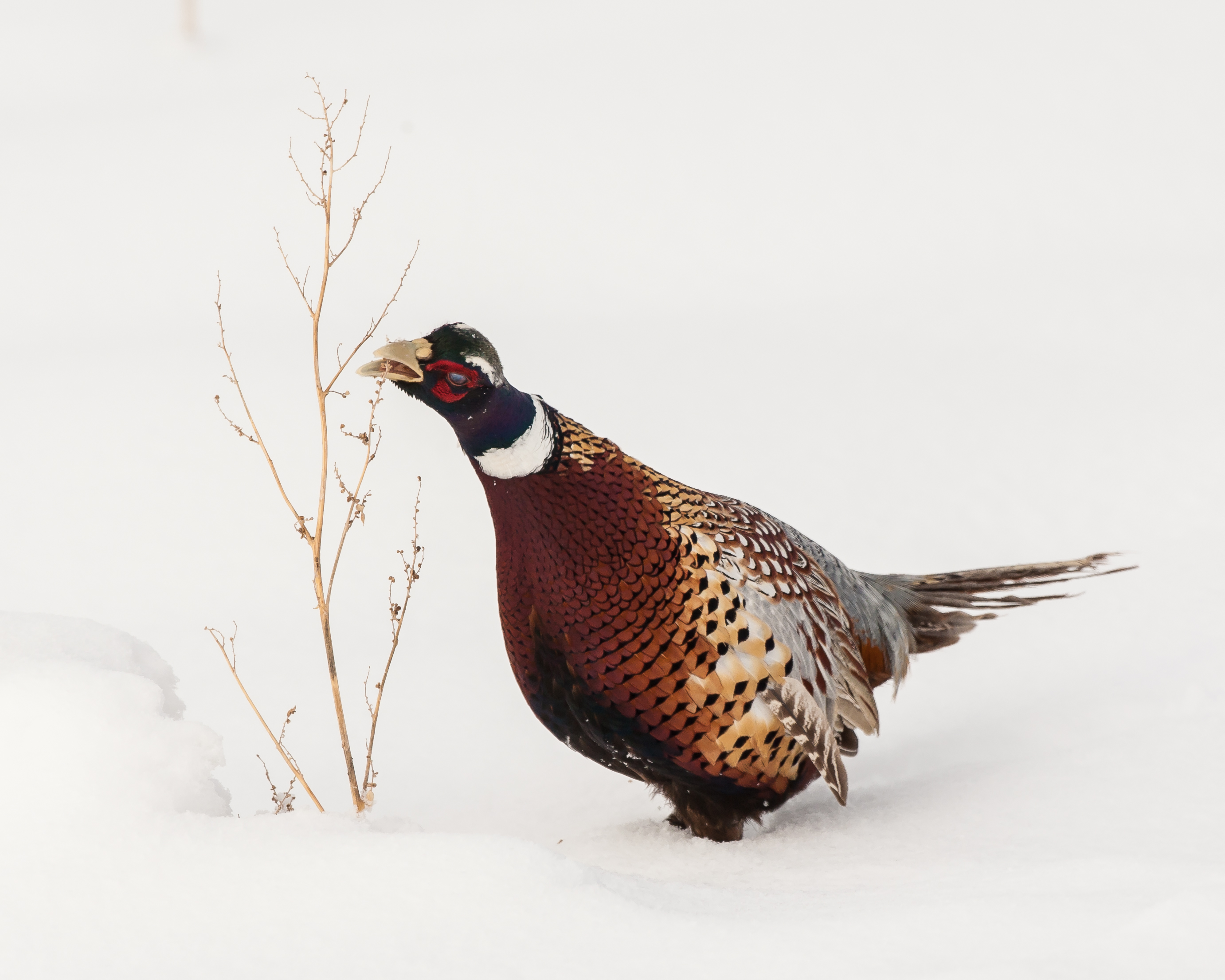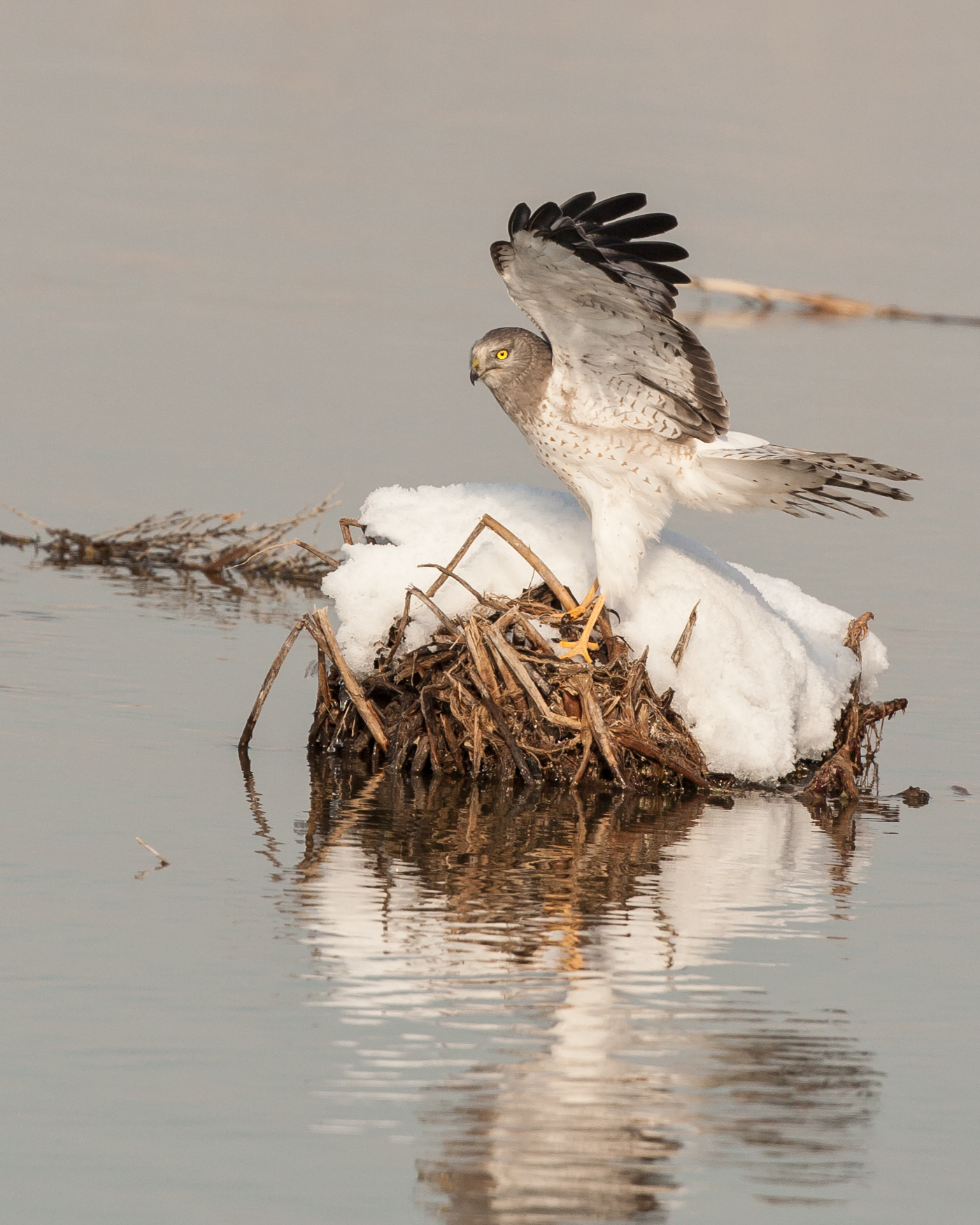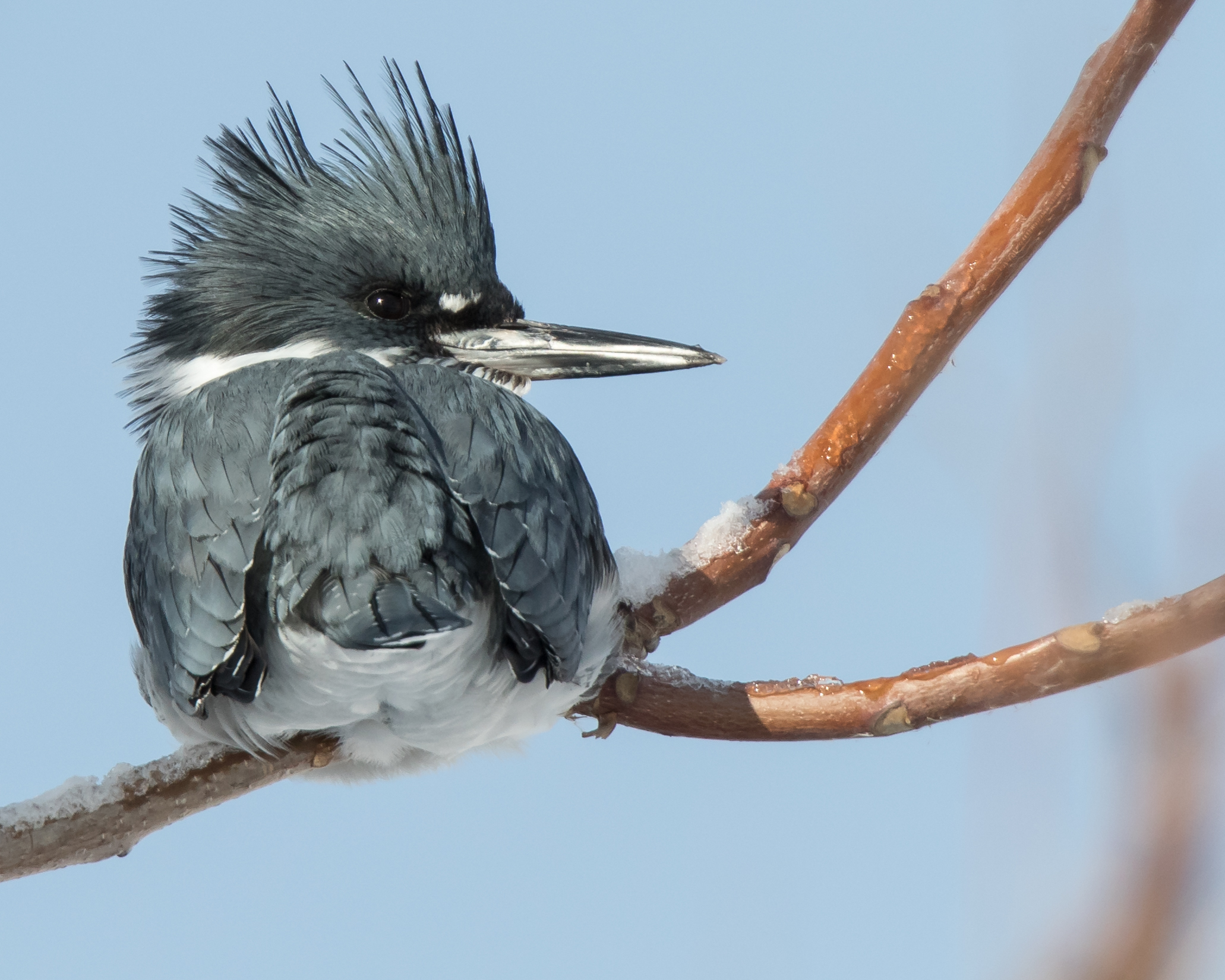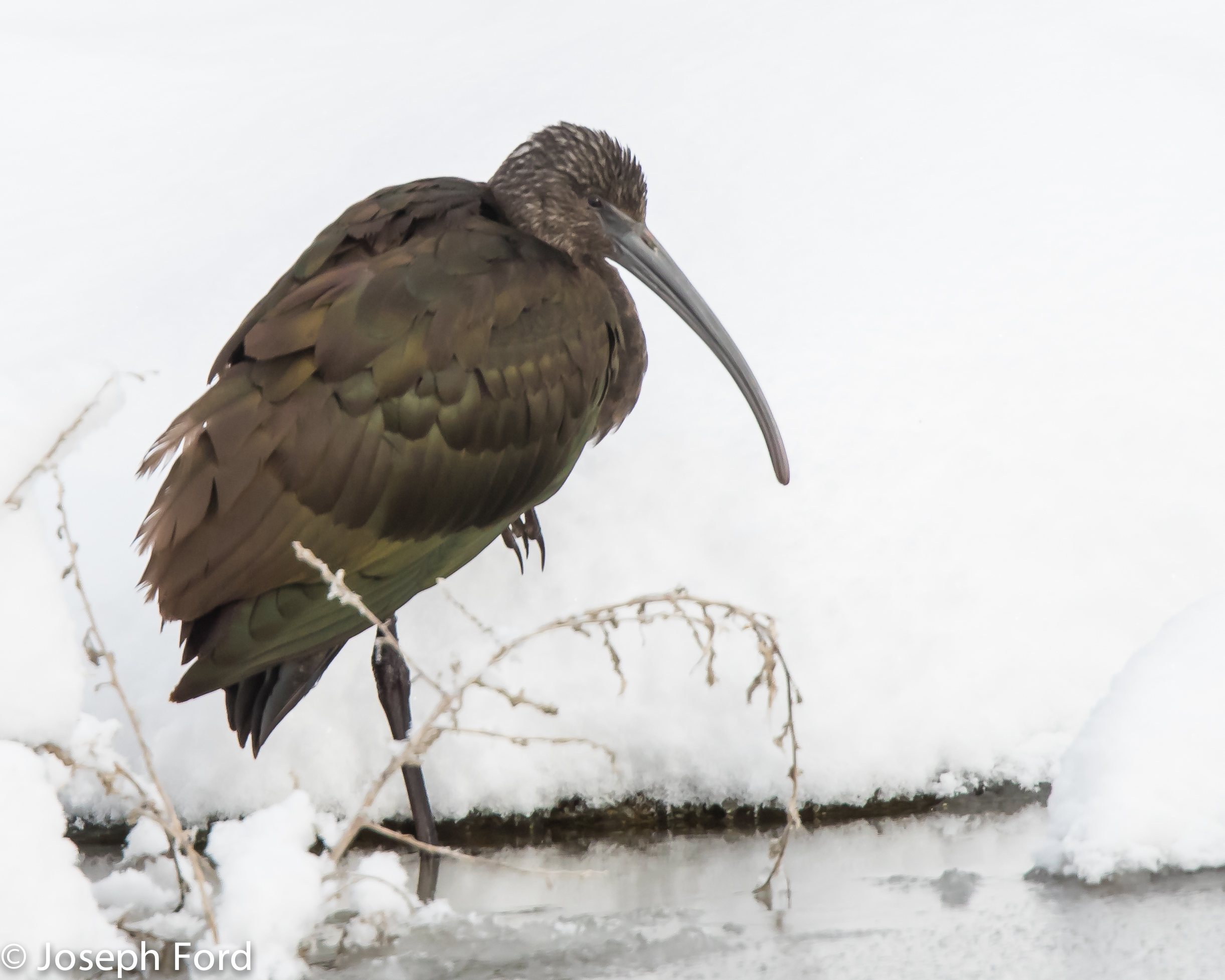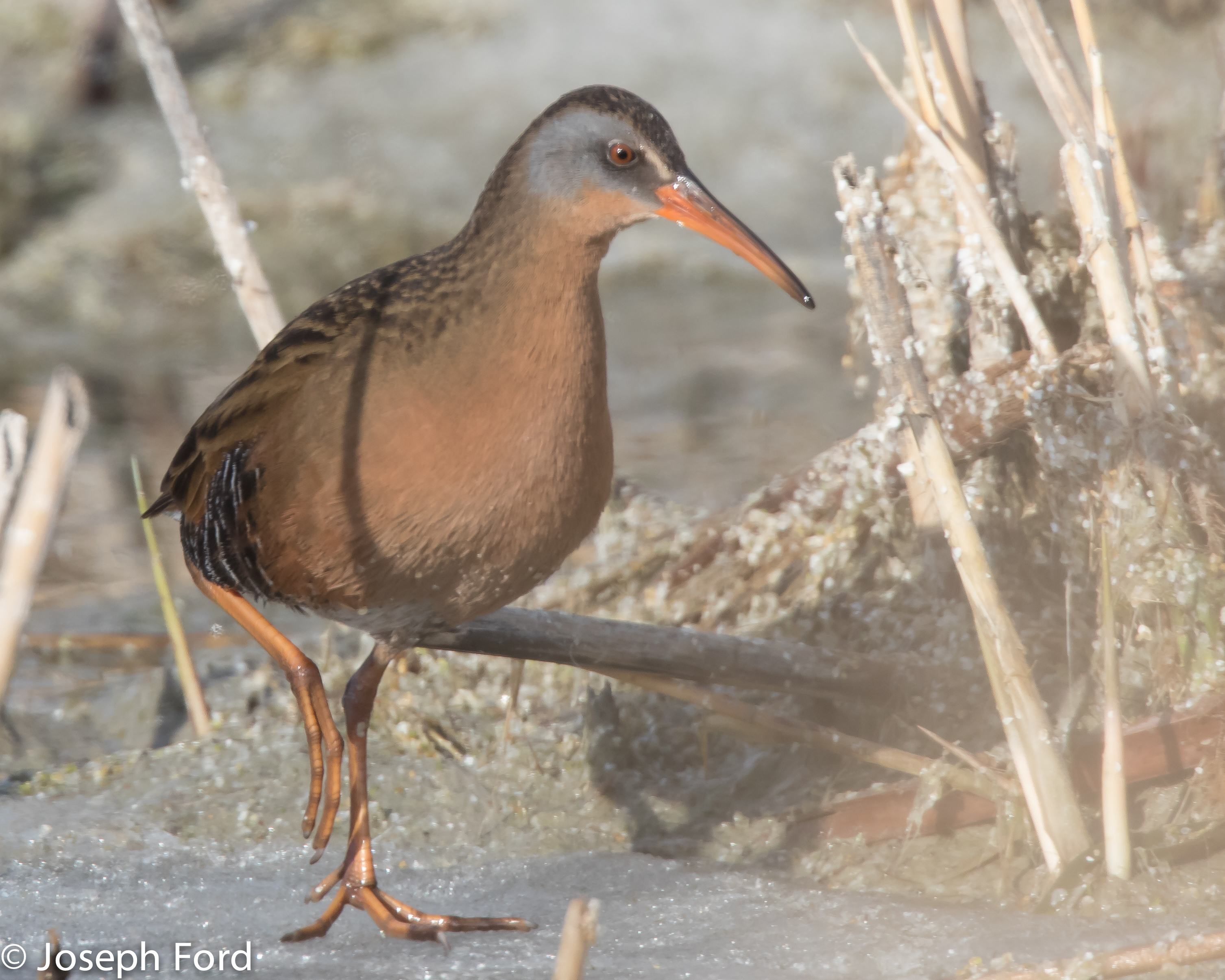While not normally associated with a large Bald Eagle Population, in February of each year hundreds gather at the marshes surrounding the Great Salt Lake. It is a great opportunity to observe and photograph these magnificent birds. However, Farmington Bay WMA is not exclusively an eagle destination for me. Raptors are drawn there by the abundant voles that populate the marshes there. These include but are not limited to Northern Harriers, American Kestrels, Red-Tailed Hawks, and Rough-Legged Hawks. Throughout the year a variety of wading birds frequent the Bay. And of course, as the WMA is primarily managed as a waterfowl hunting area we have ducks, swans, geese and others drawn to the waters. On this page, I hope to document and entertain a bit with my interpretations of this magnificent area.
First the eagles! This first image is a grouping of an adult, a first year juvenile and a second year juvenile. The first year on the far left is mostly dark with very little white plumage. The second year is at the bottom displaying more white, but still does not have any signs of having white on it’s head. The adult in the middle is, of course, the adult, displaying it’s trademark white head.
Below, a typical adult is flying directly at me and seems to be letting me know that I should not mess with him.
If there is available carrion for the eagles, they are not known to share well. Below an adult is letting this third year juvenile (some white showing on it’s head and the front portion of it’s beak is showing some yellow) that it is time to move away from the “grown-ups” table.
In this shot the eagle is flying directly at me in a snow storm. I like the effect the falling snow generates.
This juvenile is talking tough.
A sampling of other critters I have found interesting at “The Bay”
While not native to the area and the result of “stocking” for hunting, I do like these Ring Necked Pheasant
A male Northern Harrier landing on a small patch of vegetation.
These have been my nemesis for years. This Belted Kingfisher was finally willing to pose for me for just a second.
Usually rare in Utah in the winter as they prefer migration to the winter cold here. This White-Faced Ibis remained in Utah throughout the winter. It may have helped that we have had an extremely mild winter.
Usually a very secretive bird, that rarely exits the vegetation to make an appearance, this Virginia Rail seemed to have not paid attention in school.

